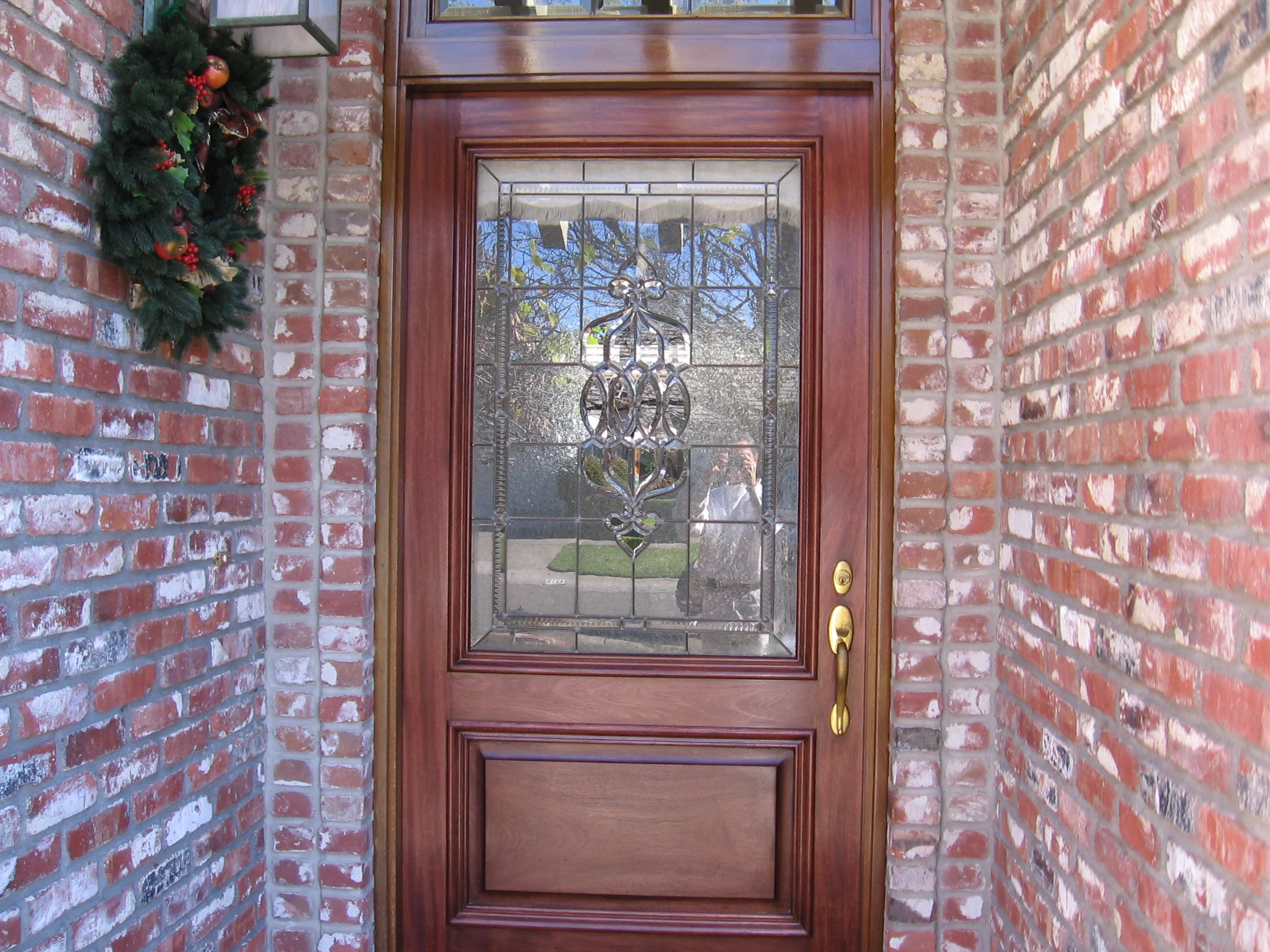Front Door Refinishing Information 916 729-1245
Our high quality labor intensive refinishing service will not only bring back the beauty of your front door but will protect the exposed surface from further degradation. We completely remove the failed finish, properly prepare and re-color the surface, and apply a Exterior Spar Varnish finish. In our experience spar varnish contains higher quality UV inhibitors for protection from UV damage and also exhibits excellent flexibility and adhesion. This type of finishing system can also be “renewed” (maintenance) to avoid the cost and inconvenience of a complete refinishing. Regular maintenance includes proper preparation and a reapplication of the finish coat to maintain the appearance and integrity of the wood surface. The competent execution of this refinishing process is the best solution. We provide the highest quality materials and craftsmanship available.
• Remove existing failed finish
• Properly prepare and apply your choice of stain color
• Apply Spar varnish sealer coat
• Apply Spar varnish gloss finish coats (satin, semi-gloss also available)
Refinishing Process
Complete removal of the failed finish, properly prepare the surface for stain, and apply multiple coats of Exterior Spar Varnish. “Spar” varnish contains higher quality UV inhibitors to help protect the wood surface from damage caused by the sun and also exhibits excellent flexibility and adhesive properties.
Front Door Maintenance; proper preparation and reapplication of the finish only, stripping not required
Life expectancy of a properly applied clear finish is difficult to predict. The intensity of sun exposure will always be the most important determining factor. I currently recommend a two year regular maintenance cycle. Maintenance consists of proper preparation and reapplication of the finish only; ideally, eliminating the additional cost to strip. Areas of high exposure may require more frequent attention. UV inhibitors are consumed in the course of protecting the finish from the destructive effects of UV, so the finish must be properly maintained to retain this protection. There have been some remarkable advances in adhesive and coatings technology over the last decade or so. Unfortunately these gains apply mostly to solid film (opaque) coatings. The ability of a transparent coating to block UV radiation as well as a solid coating remains a formidable challenge for manufacturers of architectural coatings.
